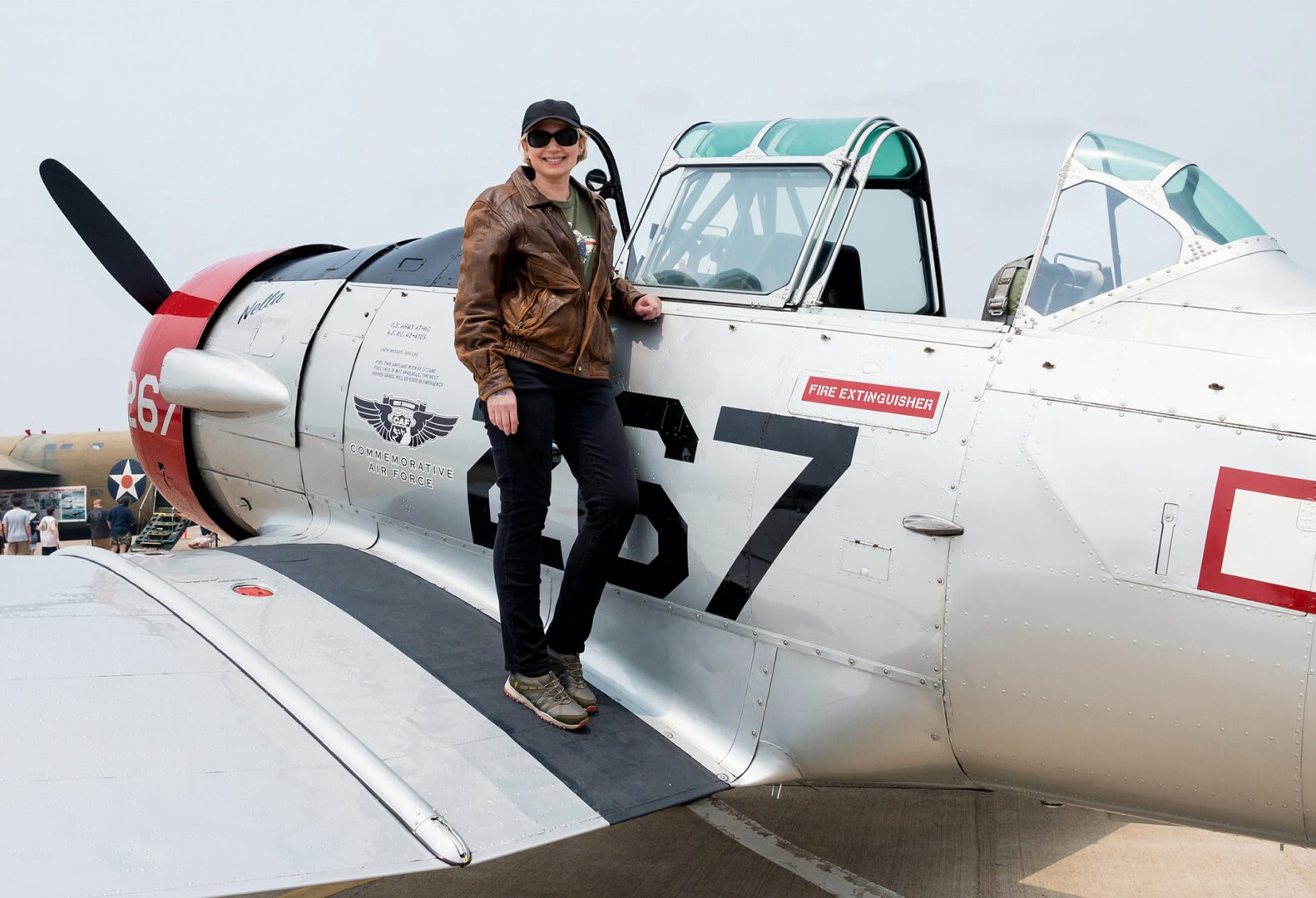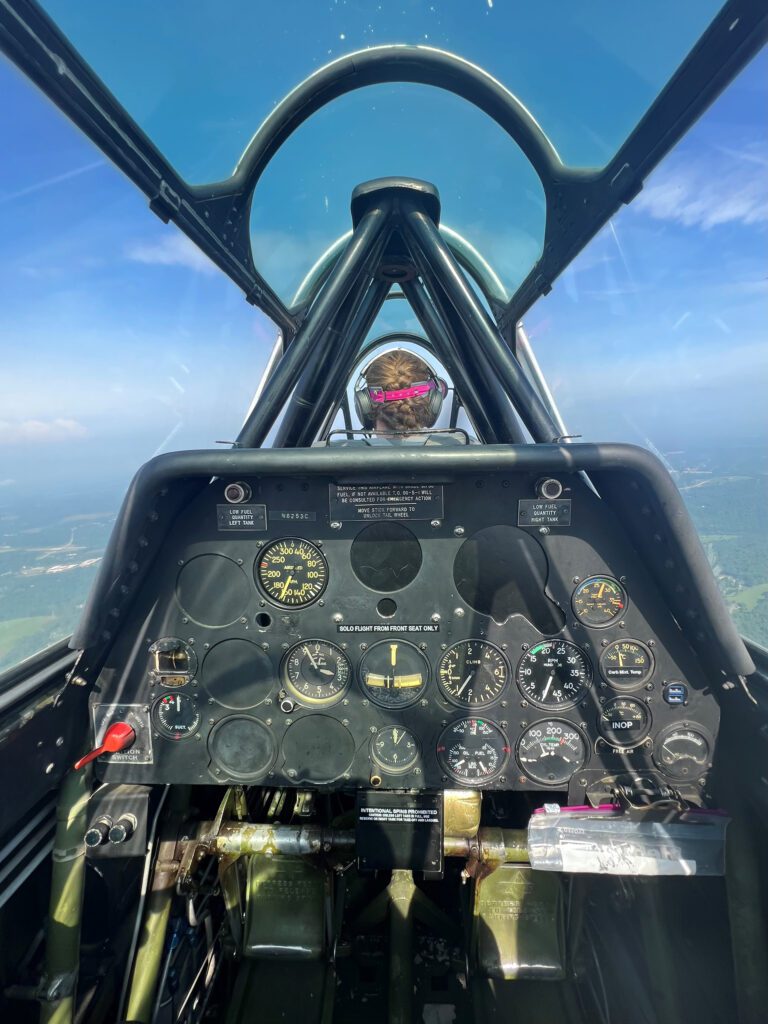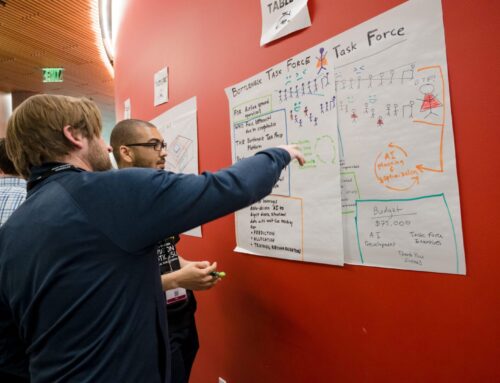Taking the Ride of My Life
By Jenny Hepler
Published July 10, 2023
Read Time: 5 mins

I earned my private pilot’s license on my 19th birthday. Three decades later, I took off and landed from the same runway on which I learned to fly, but this time I was a passenger in an historic AT-6 Texan instead of behind the controls of a Cessna 152.
My love of aviation began with my first flight lesson at the age of 14. There is something magical about escaping gravity and soaring with the birds. Everything seems so small when you look down, including your problems. Every time I fly, I experience the same gentle freedom and a feeling of belonging and peace.
I had the same feelings as I recently flew in the trainer plane from the 1940s, but they now meant something different.
When I heard that the Commemorative Air Force Air Power History Tour was coming to Allegheny County Airport, I saw it as a unique opportunity to experience several WWII-era aircraft up close, including the B-29 Superfortress, B-24 Liberator, P-51 Mustang, T-34 Mentor and Boeing PT-3 Stearman.
Attendees could also book rides on the planes, including “Nella,” an AT-6 Texan used by the Women Air Force Service Pilots, or WASPs: civilian women trained to fly various types of military aircraft. WASPs carried out duties such as ferrying planes and serving as flight instructors so that men could go to war and defend our country.
Nella was an advanced training aircraft used at the all-female Avenger Field in Sweetwater, Texas, where WASPs underwent flight training. Nella operated from June 1943 to December 1944, and since 2017 seven former WASPs have taken rides in her, according to CAF.
On July 1, I met my AT-6 pilot, Sandy Travnicek. I was thrilled to learn I’d be flying with a woman. Travnicek is a professional pilot who volunteers her time with the CAF and has also flown a giant C-5 Galaxy transport aircraft.

Commemorative Air Force pilot Sandy Travnicek (left) and ACAA communications manager Jenny Hepler (right) stand in front of a North American AT-6 Texan prior to a flight at Allegheny County Airport. (Photo by David Pradetto)
After a short briefing about the weather—some rain had just moved out of the area—we walked to the AT-6 with my old flight school in front of us. I pictured my younger self pre-flighting her Cessna so long ago, her whole future ahead of her.
In flight school, there were very few women in my class and in aviation in general. I wasn’t trying to pave the way for other women pilots. It was in my blood; I was just a girl who simply wanted to fly.
My parents always encouraged me to pursue my dreams. It was just a question of my perseverance, strength, and bravery, something I learned from my parents. My mom was a nurse for 50 years and my dad dedicated his entire career to the Boys & Girls Clubs of America.
I was lucky to have an incredible flight instructor who loved flying more than anyone I had ever met. He never treated me like a ‘’girl,” just a pilot. When I told him how I occasionally received comments about women not belonging in this field, I’ll never forget his response: “The plane doesn’t know if you are a girl or a boy, just how you fly it. So learn to be the best pilot you can be!”

19-year-old Jenny Hepler as a student pilot stands in front of a Piper PA-28 at West Penn Airport in 1992. (Image courtesy of Jenny Hepler)
The first thing I had to learn before my flight was how to get in and out of the AT-6, which required more balance and flexibility than I expected. The single-engine Texan seats two people and is about 29 feet long; it’s a snug fit.
Once we were strapped in, controllers gave us clearance to taxi. Since we were in a “tail dragger” (a plane with a wheel on its tail), which puts the nose of the plane above the pilot’s line of sight, we needed to taxi in an S pattern. This kept the taxiway visible for Sandy.
I kept the canopy open while we taxied and enjoyed feeling the cool morning air rushing past me. The tower cleared us and we sped down the runway at full throttle until the T-6 left the ground. The takeoff was so smooth; it was as if the plane couldn’t wait to get airborne. I watched the crowd at the airport pass by quickly and start to grow smaller.
As we headed south, the remaining rain clouds drifted out of our way, allowing the sun to shine brightly. I looked down and recognized landmarks from my time as a student pilot: a particular bend in the river, a painted smokestack, and open fields that I always kept in the back of my mind for possible emergency landing spots if I ever had an engine failure.
Sandy asked if I wanted to take the stick. I was hesitant, but she assured me I would do just fine. I gripped the stick with my right hand and flew straight for several minutes, then made some gentle turns. I was surprised how sturdy the plane felt, much different than a Cessna 152. I admit, it gave me chills to pilot an historic aircraft.

The view from the backseat of an AT-6 Texan flying over Western Pennsylvania. The T-6 was the primary advanced trainer aircraft for U.S. military pilots during World War II and was essential in training new pilots to skillfully operate fighter aircraft in combat. (Photo by Jenny Hepler)
As we started to head back, I couldn’t help but think of all the women who flew in this plane before me. Their hands also took this same stick hesitantly for the first time, but they soon gained confidence. Those same hands would go on to hold their children and grandchildren.
I felt the spirit of these women. They were brave beyond belief, committed to a cause and their country. They weren’t afraid to follow their passion, even if it went against the social norms of the time. The strength of their legacy lives on today through such vital organizations as the CAF.
I unexpectedly felt another spirit that day—that of a teenage girl who was also brave, strong and wasn’t afraid to live life the way she wanted it, even if it wasn’t the most popular thing to do.
I remembered and sensed that girl within me who has been there all along. I just needed to fly again and feel my calling, one that would take me on the ride of my life.
My path has led to different careers, including living overseas, and returning to my hometown of Pittsburgh and getting my dream job: working for the Allegheny County Airport Authority. I pursued my dreams, just as I was encouraged to do as a young girl.
At 19 years old, I learned to fly. At 50, I learned to soar.






